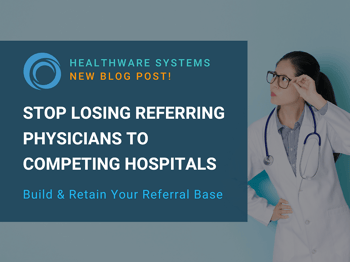Avoiding Deadly Errors When It Comes to Patient Safety
Hospitals need to work very hard every day to protect their patients from avoidable errors.
Research published in the Journal of Patient Safety estimates that over 400,000 people die every year from hospital errors that could have been prevented.
Among these errors are medication mistakes, which are a leading cause of patient safety incidents around the world. Consider one scenario in which a healthcare system had an excessive supply of pre-printed, paper forms in different versions floating around its multiple facilities. If new versions of forms were ordered, the older versions ended up stockpiled and still accessible to staff. With this system in place, a staff member could unknowingly grab an old version of a form that was not up to date with revised medication dosage amounts. If this happened, patient care could be affected.
Electronic healthcare forms and forms automation can prevent handwriting issues.
Handwritten instructions regarding medication or physician orders are also cause for concern. Illegible physician handwriting can result in pharmacists misreading prescriptions, uncertain notes in patients’ medical records, and even death. And at the very least, the need for clarification can result in delayed treatment for the patient as healthcare staff waste valuable time contacting the physician who wrote the information.
One way to easily increase patient safety and avoid similar situations within your facility is by replacing your paper forms with an electronic healthcare forms solution.
ActiveFORMS, for example, ensures consistent documentation standards by electronically updating any changes to a facility’s forms in real-time. Plus, forms are only printed when needed, so hospitals save money on storage costs and the repurposing expense of replacing older versions. Going paperless also eliminates the potential for legibility issues to affect patient safety.
Another risk patients face is having their sensitive medical information confused with other patients. Patient misidentification opportunities arise not only during registration but can also occur at any time throughout the patient encounter. Believe it or not, being mistakenly told that you have cancer is not something that just happens in the movies. Even worse? Receiving an erroneous clean bill of health and missing out on precious treatment time for a serious disease.
Mistakes like these can be fatal and are more common than most patients know. Imagine being responsible for a patient ingesting medicine to which he/she is severely allergic, receiving a blood transfusion for someone else’s blood type, or undergoing the incorrect surgical procedure, all because your medical staff reviewed the wrong patient’s data before providing treatment.
Again, going paperless and automating manual processes can help you avoid these problems, protecting your patients from harm and your facility from the costly legal consequences related to medical malpractice lawsuits. Registration and patient encounter accuracy tools can help you proactively monitor and dramatically decrease registrar errors. With forms automation of electronic healthcare forms, documents can be pre-populated with standard patient demographic data and barcode identifiers, reducing the potential for forms to be confused between different charts. Not only do these types of technology improve patient encounter accuracy, but they also enable facilities to easily pass required JCAHO audits and remain HIPAA compliant.
Electronic healthcare forms and forms automation can greatly improve patient safety.
Patients expect to leave a hospital in better shape than when they arrived. Many are unaware of the dangers described above and certainly don’t expect a hospital’s mistake to cause more harm than the illness or health condition that brought them there in the first place. Therefore, it is up to the healthcare professionals in whom they place their trust to implement healthcare solutions that support patient encounter accuracy and ensure patient safety.

